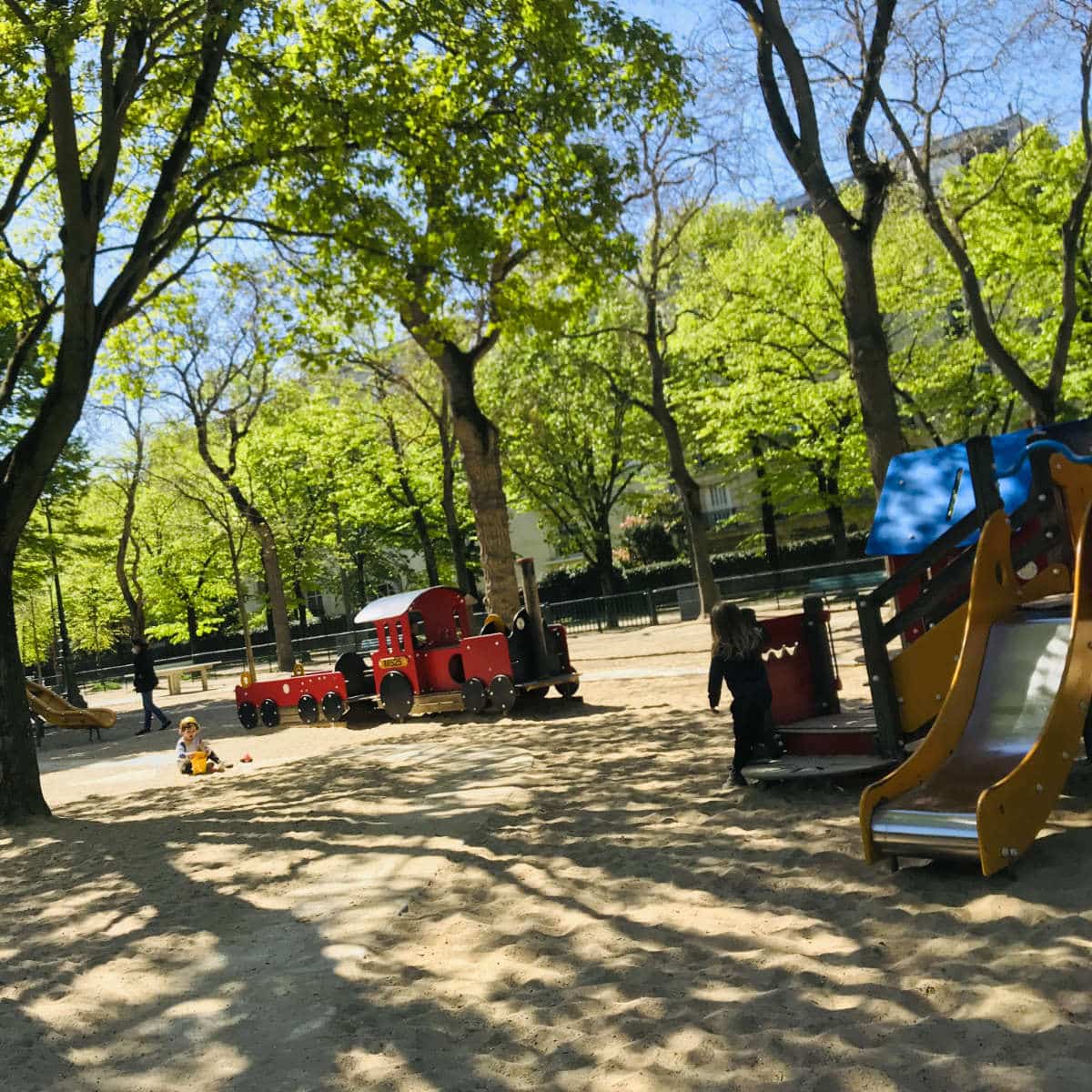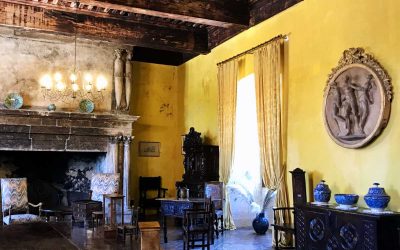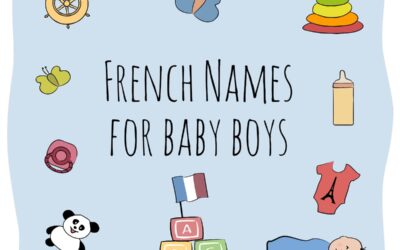If you have small children and are thinking of moving to France, you may be curious to know what the French education system is like.
It may seem a little alarming, but schooling for all French children is compulsory in the calendar year the child turns 3.
This means if your child is born in December, he will be entering school at 2 years and 8 months old. In the chart below, when it says “age”, it means the year that that child turned that age.
| French School Grade | Acronym meaning | Age of Child |
|---|---|---|
| PS | Petite Section (Small Section) | 3 |
| MS | Moyenne Section (Middle Section) | 4 |
| GS | Grande Section (Large Section) | 5 |
To translate into American schooling standards, Moyenne Section is pre-school, Grande Section is kindergarten, and little 3 year old Petite-Sectioners would still be in nursery.
The French preschool system, known as école maternelle (“maternal school”), is governed by a series of laws known as the Règlementation pédagogique. The guidelines and standards for teachers are set by the French government, and the teachers are part of the Education nationale.
In effect, this means that each French region cannot come up with their own standards of education, as is the case in the United States or Canada, where education is regulated by the state/province.
In addition, French preschools can be either public or private. In both cases, the instruction must follow federal standards, although certain things like “montessori” education doesn’t have fixed guidelines as long as they meet overall reglementation. So let’s find out what really goes on in Maternelle in France, shall we? Allons-y!
- Petite Section (Year 1)
- Moyenne Section (Year 2)
- Grande Section (Year 3)
- French Preschool hours
- Nap time
- No School on Wednesdays
- School holidays
- Centre de Loisirs (Leisure center)
- School canteens
- Parent-Teacher Communication
- Learning English
- Grading
- Outside the classroom
- Homeschooling in France
- Public vs Private Schooling
- No school uniforms or gender separation
- Tips to prepare your child for their first day in preschool
- 1. Dress your child in clothes they take on and off independently
- 2. Label everything
- 3. Ask the teacher if your child needs smocks or soft indoor shoes
- 4. Children must be potty-trained
- 5. Keep a change of clothes in their schoolbag
- 6. Start the morning with a good breakfast
- 7. Get to know the teacher's assistant (ATSEM)
- 8. Teach them basic phrases in French
- 9. Let your child take their favorite stuffed toy to school
- 10. Find out if your child's class has a blog or classroom app.
- 12. If your child has allergies, discuss with the school doctor
- 13. If your child stays after school, get to know the animators.
Petite Section (Year 1)
The littlest preschoolers are in Petite section (PS) and can be as young as 2 years and 8 months, since France goes by the calendar year. It isn’t nursery (crèche), but it is not usually that big of a change.
If there are a lot of really young children (i.e. children born at the end of the year), the town will open a TPS or Toute Petite Section for the really littles.
When my little one entered PS, the maîtresse said that the main goal in Petite Section is for young children to like coming to school.
French PSers will learn to sing the alphabet, to count, to draw, etc. They also do activities with their class such as going swimming, riding a bike in the school courtyard, etc.
But the emphasis in French preschools is on coloring activities, arts and crafts and to hold a pencil properly. Drawing is more important than writing the alphabet. Children are taught to use their imaginations, cut with scissors and glue things together.
One particular PS teacher introduced my children to the modern artist Pierre Soulages, whose work is featured in the Centre Pompidou museum in Paris. (His paintings are rather easy for a 3 year old to emulate.)
Children also learn basic shapes, numbers, etc. But the goal is to work together with others, follow instructions, share, etc., not their technical prowess.
By the way, don’t be surprised if your little preschooler comes home saying “gros mots” (funny and baby swear words) like caca boudin, bébé cadum, etc. This is just part of the normal socializing process among kids their age!
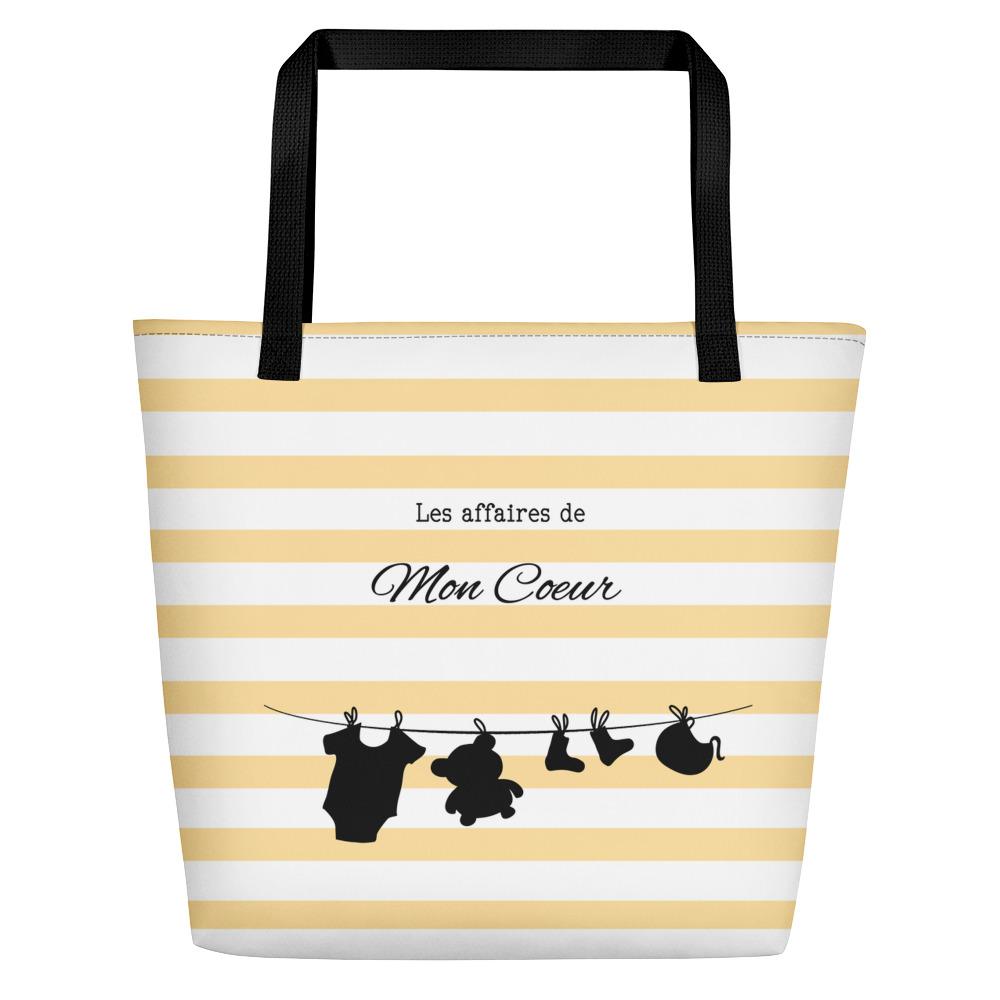
Moyenne Section (Year 2)
With a little bit more emphasis on writing the ABCs and writing their names in Capital letters, the Moyenne section 4-year-olds build on what they have learnt in Petite section.
The routine is more or less the same. Many French maternelles actually have mixed classes with PS-MS or MS-GS children together in a Montessori style, so that older children get to help the younger ones.
There are plenty of games like magic sand, connect 4, etc. where children learn how to play together, how to win, and indeed, how to lose.
Basic maths, reciting songs, and poetry also start to enter into the curriculum. Topics like countries of the world and the human body are also introduced, depending on the teacher.
Grande Section (Year 3)
The French school system is based on cycles, and Grande section is the end of Cycle 1. So while parents may feel a bit more pressure, the teachers try not to place any on the students.
In terms of international equivalence, Grande section is the equivalent of Kindergarten, where children attend when they are 5 years old. Grande section kids will know how to write in capitals and small letters, and will start to read some words. (Reading, however, is a skill fully learnt in CP aka 1st grade.)
Basic numbers, addition, and subtraction will be taught, along with some cursive handwriting. The emphasis however is still on the comportment of the child and willingness to learn, rather than the technical skills.

French Preschool hours
Maternelle starts at around 8:30am every morning and continues until 4:30pm. There is a 2-hour break in the middle of the day for lunch and recreation.
A typical preschooler’s day involves:
- Morning greeting – Singing a welcome song, counting the number of children in the class, etc.
- Ateliers (workshops) – arts, crafts, writing, games, playdough, puzzles, etc. Done with small groups of children.
- Regroupement – full class gathers together to read a story, sing, basic math, etc.
- Motricity – exercise activities such as yoga, gymnastics, dance, etc.
- Free time – playing games indoors by themselves
- Recreation – outdoor play
Each activity takes around 20-30 minutes max, as most small children lose interest beyond that point.
Children are taught to sit and be attentive, to raise their hands to ask a question, to listen and participate, etc. The same classroom routine is maintained everyday, even though the activities themselves will change.
Now everyone knows that getting 20-30 children under the age of 5 to follow along and be obedient is quite unrealistic. But the quick change of tasks assigned and having the same routine everyday, gives the kids the structure and security to look forward to going to school.
Nap time
Little Petite sectionners will have a nap, with proper mattresses and blankets for about 30-45 minutes every afternoon.
Older Moyen and Grand section children will do a “temps calme” where they lie down on mats for around 20-30 minutes and rest. They may fall asleep if they are tired, but that is left up to them.
The teachers usually go at the pace of the children, and older children born at the start of the year may choose instead to listen to a story, or quietly entertain themselves.
No School on Wednesdays
Most preschool and primary school students don’t have school on Wednesdays. It is supposed to be the day for extra-curricular activities, to rest, etc.
There was a move in 2018 by the government to insist on Wednesday morning classes, however, the teacher unions and parents protested. This led to some towns having school on Wednesday mornings and reducing hours on other days, while other towns did not.
School holidays
The school year in France starts in September and ends the 1st week of July. The first day of class is known as the Rentrée, and it is such a big deal that many offices give their employees the day off to take their preschool-age children to school.
French kids have a 2 week holiday every 6 weeks, which can complicate anyone’s family life in France. This means all kids in France are off of school for 2 full weeks during each of the following months:
This is part of the regular cycle of holidays in France, and many parents also take the time off to go somewhere with their kids, for at least one week out of the two weeks. (French adults usually have between 6-10 weeks holidays, and so can afford to do so.)
To reduce the number of people going on holiday at any one time, the map of France is divided into 3 zones, A, B & C. The school holidays (other than Christmas) are staggered within a few days, so that the entire country is not on holiday at the same time.
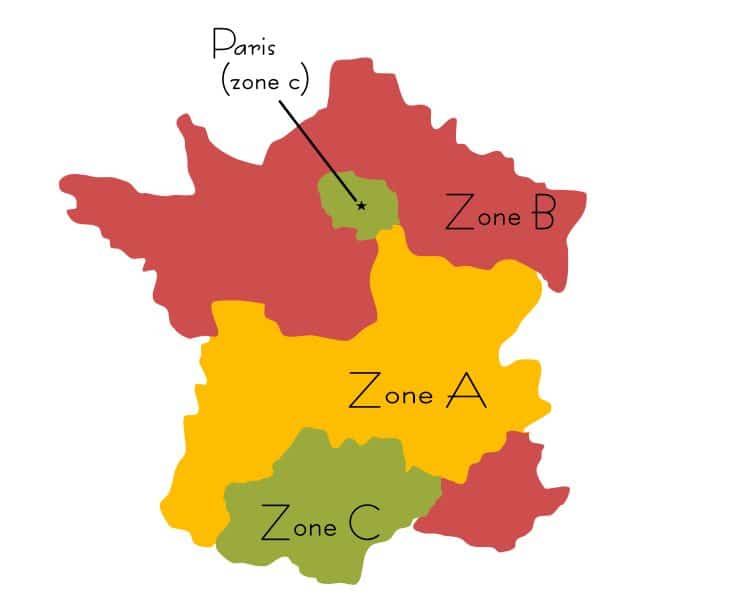
Nevertheless, if you are holidaying in France around that time, expect higher prices, more drivers on the road, and longer lines at tourist attractions. School holidays are an “event” in France.
Centre de Loisirs (Leisure center)
For working parents, each town offers a centre de loisirs (activity and leisure center), where parents can drop off their children on Wednesdays at a minimal cost that is based on income levels. In real terms, the cost is around €5-20/day including lunch.
During all school holidays including each summer, the centre de loisirs is open to look after preschool and primary school kids whose parents are working. The centers are usually run by the same animators who run the Wednesday programs so children are usually already familiar with the process.
These centre de loisirs hold a variety of craft activities, sports, dance, and other programs based on the age of the child.
They also often do field trips to nearby farms, the cinema, museums, etc. Along with the animateurs, the children will be taken by bus to the outing, provided lunch, and returned in the afternoon.
School canteens
Lunch time is considered part of schooling, and French schools take it quite seriously.
Cantine meals are served family style, with small groups of 5 or 6 seated around a table. Prepare your child for this by teaching them how to sit at a table, use a cup without a lid, putting on a napkin, asking for more, or saying they are finished. If they don’t like something, they will be encouraged to try it but not forced.
No picky eaters allowed here. From a young age, children are introduced to a wide variety of healthy meals and taught to try everything.
Here is a maternelle and primary school sample menu:
☞ READ MORE: French food that all kids will love
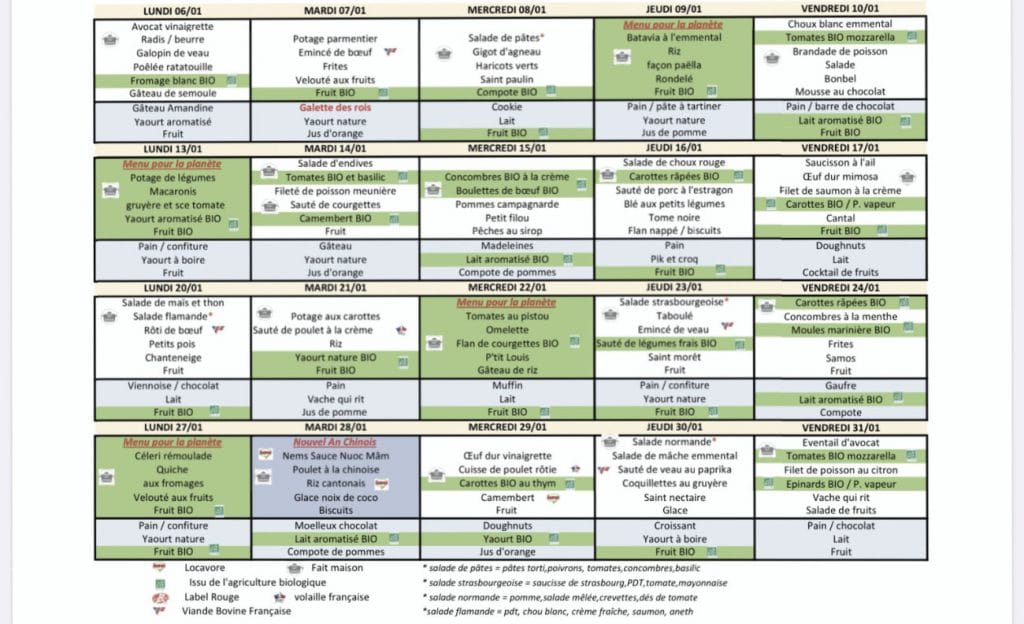
And one thing you will not find in a French school canteen: Ketchup. The French government banned it from being allowed in school canteens in 2011, in an effort to combat obesity.
Parent-Teacher Communication
On the 1st day of preschool, your child will receive a Cahier de Correspondance. This is a notebook between the parents and the teacher, that will include all the important details about the progress of your child.
Parents can write messages to the teacher, who will in turn reply back via the notebook. It is usually useful to check the cahier de correspondance every evening.
If you wish to have a discussion with the teacher, ask for a meeting through the cahier de correspondence, rather than in the rush of morning drop-off or evening pick-up.
Learning English
Most public maternelles in France also start a dose of English instruction, about 45 minutes once a week. With songs and games, children start to get introduced to basic words. (Don’t expect your child to become fluent, however, if he/she isn’t already exposed to English!)
Grading
All the children get a report card twice a year, at half-term before the Christmas holidays, and at the end of the year in June.
Parents must give their approval for child to move up a grade. At the end of each year, parents receive two forms for the Poursuite de Scolarité. The first form is the Proposition du conseil des maîtres with the decision of teacher and preschool to either promote the student or keep him/her behind. Parents have a few days to approve or appeal the decision.
A few days after that, parents will get a 2nd form with la décision of Conseil des maîtres. This decision can then also be approved or appealed by the parents to the Appeals Commission and the School Board.

Outside the classroom
Beyond classroom learning, in certain preschools, Grande section students are offered Class Verte or Classe Blanche, which are experiences outside the classroom.
In Classe Verte (green class) is exploring the countryside, with activities such as hiking, canoeing, horseback riding, etc.
Classe Blanche (white class) is usually for skiing and snow-related activities. Students who live the French Alps usually also have day trips to nearby ski resorts in winter as part of their schooling.
These can be daytrips or overnight trips over 2-4 days, where the entire class is expected to participate.
Homeschooling in France
On 23 July 2021, a new law was passed which significantly restricts the choice to homeschool in France. It states that:
Homeschooling (IEF – Instruction En Famille) will only be authorized for reasons of health, disability, artistic or sports practice, family homelessness, remoteness. of an establishment, and also in the event of a “situation specific to the child motivating the educational project”.
-Le projet de loi contre le séparatisme
With strict restrictions and annual educational controls, the paperwork involved is not for the faint of heart. If you wish to know more, you can contact www.lesenfantsdabord.org, a homeschooling charity in France.
Public vs Private Schooling
Public schools are free in France, with parents only paying for the lunchtime canteen, as well as if they use the early morning drop-off or late evening pick-up services.
These services are income-based and tax credits are available as well. The average cost is as cheap as €1-7/day.
Private schools can start at about €500 per semester and go up into the €000s, depending on if they are Catholic, bilingual, etc.
In the Paris area, there are many private montessori-bilingual schools. However, as there is no particular regulation of “what is montessori” in France, parents must do their own due diligence when it comes to these schools.
No school uniforms or gender separation
Unlike the U.K., students in France don’t wear school uniforms, at least not in public schools. There has been some debate about bringing back uniforms, but none seriously.
In addition, boys and girls are not separated in separate classes or schools as they are in the U.K. or other countries. Even private schools in France are usually integrated.
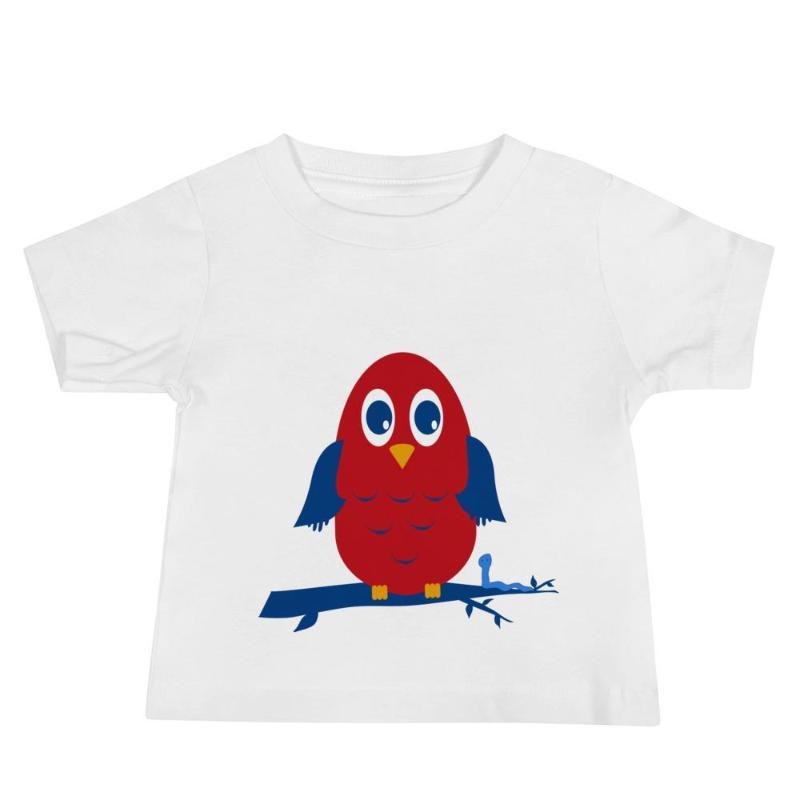
Tips to prepare your child for their first day in preschool
Preparing your child for a foreign preschool can be a daunting experience. But there are many things you can do to ensure your child’s transition is as smooth as possible. Here are some guidelines to help your child settle in with ease.
1. Dress your child in clothes they take on and off independently
The little Petite sectionners take off their shoes and sometimes their pants, depending on the teacher, and if they are wearing tight jeans.
The children should be able to put on/take off independently, including shoes. Velcro shoes work best, along with comfortable joggers that they can take on and off when using the bathroom.
2. Label everything
Avoid expensive name brand clothing, fancy hair clips, and other things that you don’t want to get lost or destroyed. The teacher has up to 30 children to keep track off, so you want to make their lives that little bit easier.
Label your child’s name on everything you can, and check out where is the school’s lost and found.
3. Ask the teacher if your child needs smocks or soft indoor shoes
Some preschools offer smocks for doing things like painting, while other schools will ask you to bring them in.
In addition, certain French maternelles will allow indoor shoes, while others will just have outdoor shoes all day long. Ask the teacher to find out.
4. Children must be potty-trained
Children must be reasonably potty-trained, but it is not a big deal if there are accidents or two, especially at the start of the school year.
The children are taken to the toilet on a frequent basis, all grouped together is a large bathroom. The children usually catch on, having watched all their classmates. However they must wipe themselves as staff are not allowed to touch the children’s private parts.
5. Keep a change of clothes in their schoolbag
If there is an accident, a little packet of soiled articles will likely be delivered back to you.
Keep a full change of clothes in their school bag, and don’t hesitate to include more than one set if your child is not quite as confident when it comes to potty-training.
6. Start the morning with a good breakfast
As school usually starts at 8h30 and lunch is not until 11h30, and there is usually a recess to run around in there as well. So a good breakfast will be quite important for a young French child.
7. Get to know the teacher’s assistant (ATSEM)
The ATSEM is the teacher’s assistant and is there to take care of all the little accidents, nap time and other support activities.
The ASTEM is just as important as the teacher, so make sure your child is introduced to them and is knows to go to them for help, as necessary.
8. Teach them basic phrases in French
If your child is not fluent in French, teach them some basic words and phrases like:
- Maitre/Maitresse – Teacher (m/f)
- J’ai besoin d’aller aux toilettes – I need to go to the toilet
- Je ne comprend pas – I don’t understand
- Bonjour – Good morning
- Merci – Thank you
- S’il vous plâit – Please
- Je veux mon doudou – I want my favorite stuffed toy
9. Let your child take their favorite stuffed toy to school
Soothers and pacifiers are usually not allowed in preschools in France, but your child’s favorite stuffed toy, aka the doudou, is a must. All the other children will have theirs, especially in Petite section, so be sure to include it.
On the other hand, make sure it is not the same stuffed toy that your child needs at night to sleep with, as the toy can often stay in school overnight. With so many children in a class, the nightly return of the doudou is not guaranteed.
10. Find out if your child’s class has a blog or classroom app.
These days many schools have an online blog, and teachers use apps like Klassly and Kidizz to keep parents informed. This information and how to connect will usually be provided in the cahier de correspondence during the first couple of weeks of school starting.
12. If your child has allergies, discuss with the school doctor
If your child has allergies where they cannot have certain foods from their canteen, parents must get a PAI (projet d’accueil individualisé) from their own doctor or the school’s médecin.
The PAI will contain:
- Diet restrictions to apply
- Conditions during meal times
- Scheduling arrangements
- Exemption from certain activities incompatible with the health of the child or adolescent
- Alternative activities offered
13. If your child stays after school, get to know the animators.
The periscolaire animateurs are the school staff who usually manage the lunchtime meals and recreation times, along with the afterschool and wednesday activities.
While teachers are directed by the Education Nationale, the animators are directed by your town’s mairie (mayor’s office.) If you have a question about lunchtime or recreation, contact the periscolaire animators rather than the teacher, who may not be as aware of all the particular ins and outs.

Congratulations you’ve gotten through preschool in France! There is no graduation ceremony however, as French schools don’t do these types of celebrations 😉 If you enjoyed this article, you may want to read more about living in Paris. A bientôt!
